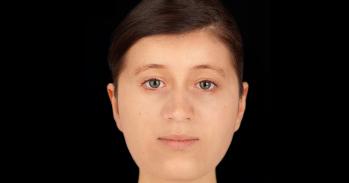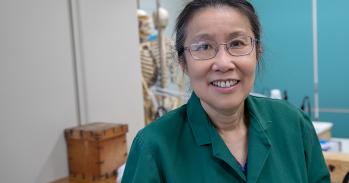Corpses sold for dissection by body snatchers helped improve understanding of how the human body worked, according to a new book that brings together archaeological evidence from their remains.
Corpses sold for dissection by body snatchers helped improve understanding of how the human body worked, according to a new book that brings together archaeological evidence from their remains.
The bodies were physically sawn up and divided, presumably so that different medical students could dissect different parts of the same body before it would have decomposed.
Dr Piers Mitchell
When you bury family members in a cemetery, you expect them to stay there. Not so 200 years ago, however, when body snatchers prowled the nation’s burial grounds looking for subjects. This lucrative cottage industry was driven by an acute shortage of bodies that were available for dissection by the growing number of medical students.
Now, a new book has amassed, for the first time, archaeological evidence for what happened to the corpses, from dissection and autopsy through to reburial and display. Many of the new findings have never been published before.
The book reveals how the macabre activities of the body snatchers helped to further the progress of medicine and science by improving understanding of how the human body worked.
University of Cambridge researcher Dr Piers Mitchell and colleagues from around the UK have assembled evidence from excavated human skeletal remains from the 1600s to the 1800s. The remains were buried close to workhouses, prisons, private anatomy schools and medical schools in Newcastle, Worcester, Oxford and sites in London.
The archaeological evidence provides a vivid image of what it must have been like to cut up a corpse in order to study its constituent parts.
Moreover, it shows how anatomy was a key area of scientific investigation 200 years ago. “Thanks to the discoveries of the early anatomists,” said Mitchell, from Cambridge’s Department of Archaeology and Anthropology, “we have come to move towards our modern knowledge of how organs work and what normal anatomy is all about.”
Some of the remains show evidence of amputations performed as training exercises, probably equipping students with the ability to perform the surgery in living individuals. In one instance, the same cadaver had had multiple amputations, as well as their skull and chest opened.
Skeletons of adolescent males, believed to be the remains of executed criminals, had undergone craniotomies to open up the skull to give access to the brain, middle ear and other structures of anatomical interest. Fine cut marks on some skulls showed where the muscles had been carefully peeled away from the bone.
The bones of dogs, rabbits, cats, cattle, horses, monkeys and even tortoises were also found. Many of the animal bones had saw cuts in the same position as those found in the human skeletons – highlighting the quest to understand comparative anatomy.
One skeleton had been decapitated through the spine with a saw, and several of the skeletons were incomplete, suggesting that dissected limbs were buried elsewhere.
“The fact that different bodies were dissected by different medical students at different times means that the same parts of the same body weren’t always available to be recombined together,” said Mitchell. “So we may have a coffin of arms or a coffin of legs, or sometimes the upper part of the body would be present and the lower part of the body would be missing, and they would put material in there such as dissected animal bones or even rocks to balance out the coffin.”
Some anatomical specimens were preserved and retained for future reference, and form part of pathology collections that continue to be used for teaching medical students to the present day.
The book Anatomical Dissection in Enlightenment England and Beyond: autopsy, pathology and display provides unprecedented evidence of dissection and autopsy practices – and the economical use of corpses – as Mitchell explained: “The bodies were physically sawn up and divided, presumably so that different medical students could dissect different parts of the same body before it would have decomposed.”
Perhaps the most infamous providers of corpses to the medical establishment were Burke and Hare, two characters from Edinburgh who took the industry one stage further and murdered their victims to sell their corpses for dissection by the doctors teaching anatomy in the city. Their grisly occupation was exposed on 31 October, Halloween, 1828.
“This sent a signal out to the rest of the country,” said Mitchell. “It created a field change in attitudes as to what people should do with the bodies of the dead. Everyone decided what was more important was that the living got the best treatment from their doctors and that that was given a higher priority over the corpses of the dead.”
The result was the 1832 Anatomy Act, when it became legal for the corpses of those who died in poorhouses and hospitals who were not claimed by friends or relatives to be used by the private anatomical teaching institutes. “No-one needed to be dug up from the graves anymore and the cemeteries could rest in peace,” added Mitchell.
The research described here has been published in 'Anatomical Dissection in Enlightenment England and Beyond: autopsy, pathology and display' (2012), edited by Piers Mitchell, Ashgate Publishing Company.
For more information, please contact Louise Walsh (louise.walsh@admin.cam.ac.uk) at the University of Cambridge Office of External Affairs and Communications.
This work is licensed under a Creative Commons Licence. If you use this content on your site please link back to this page.



